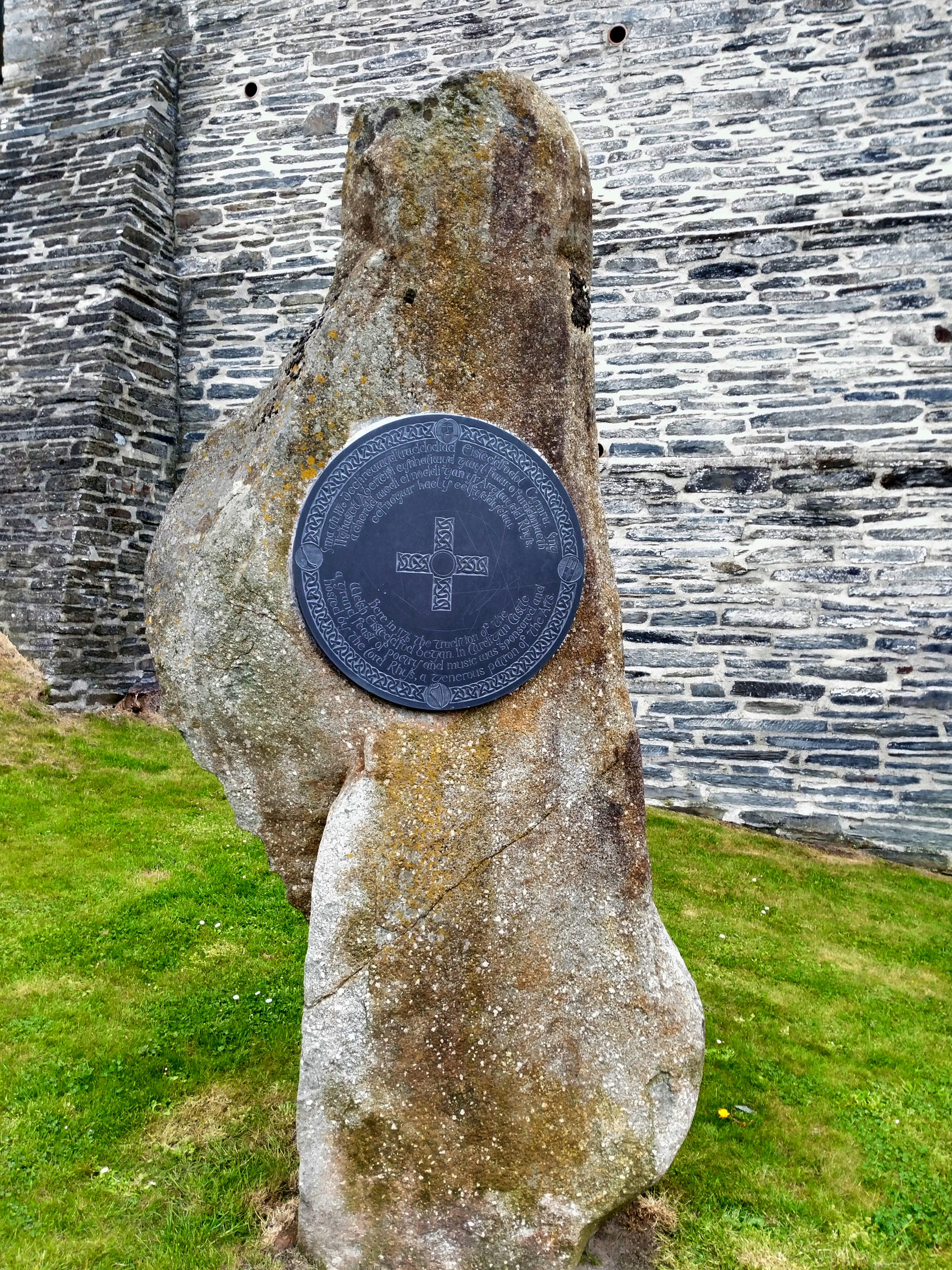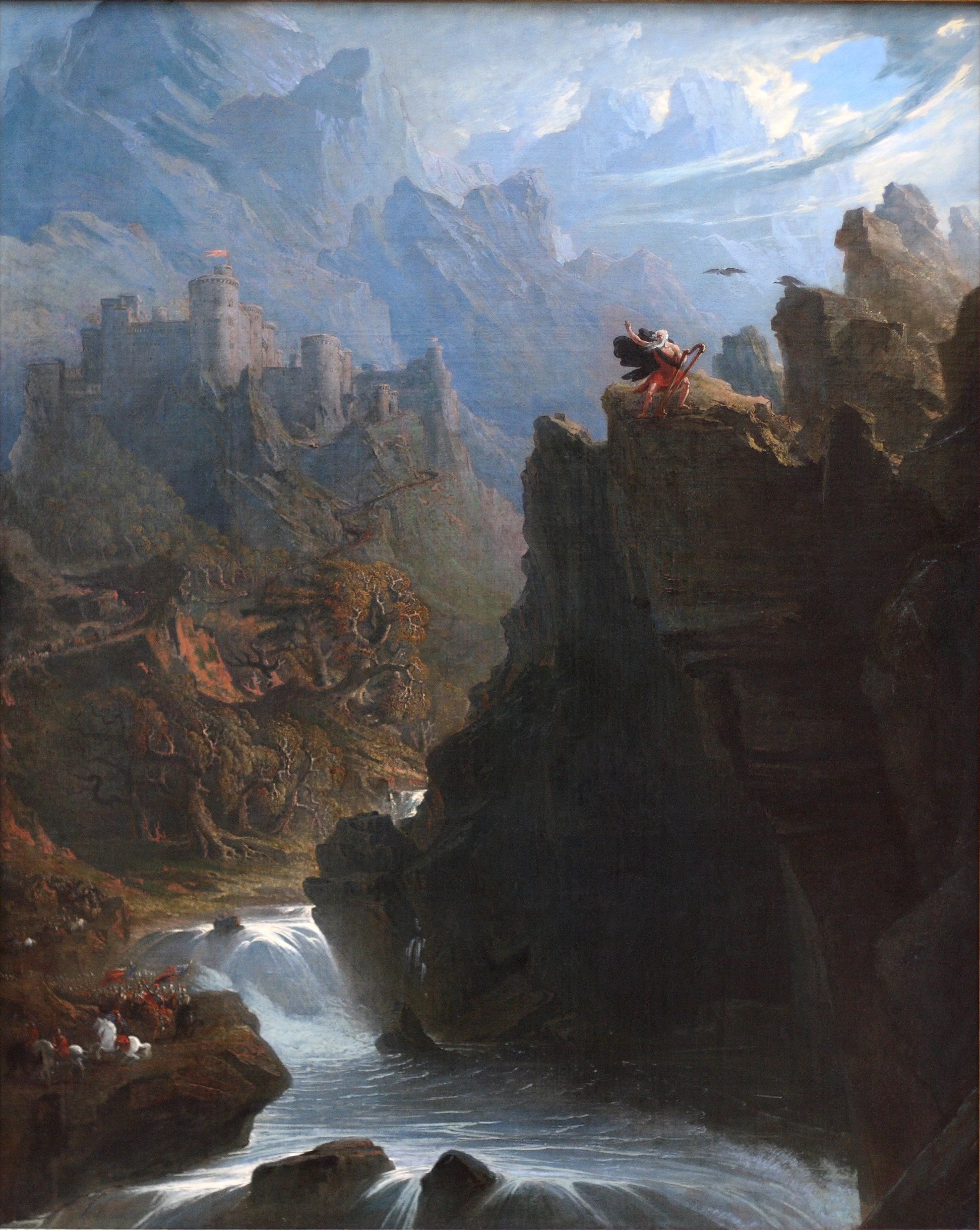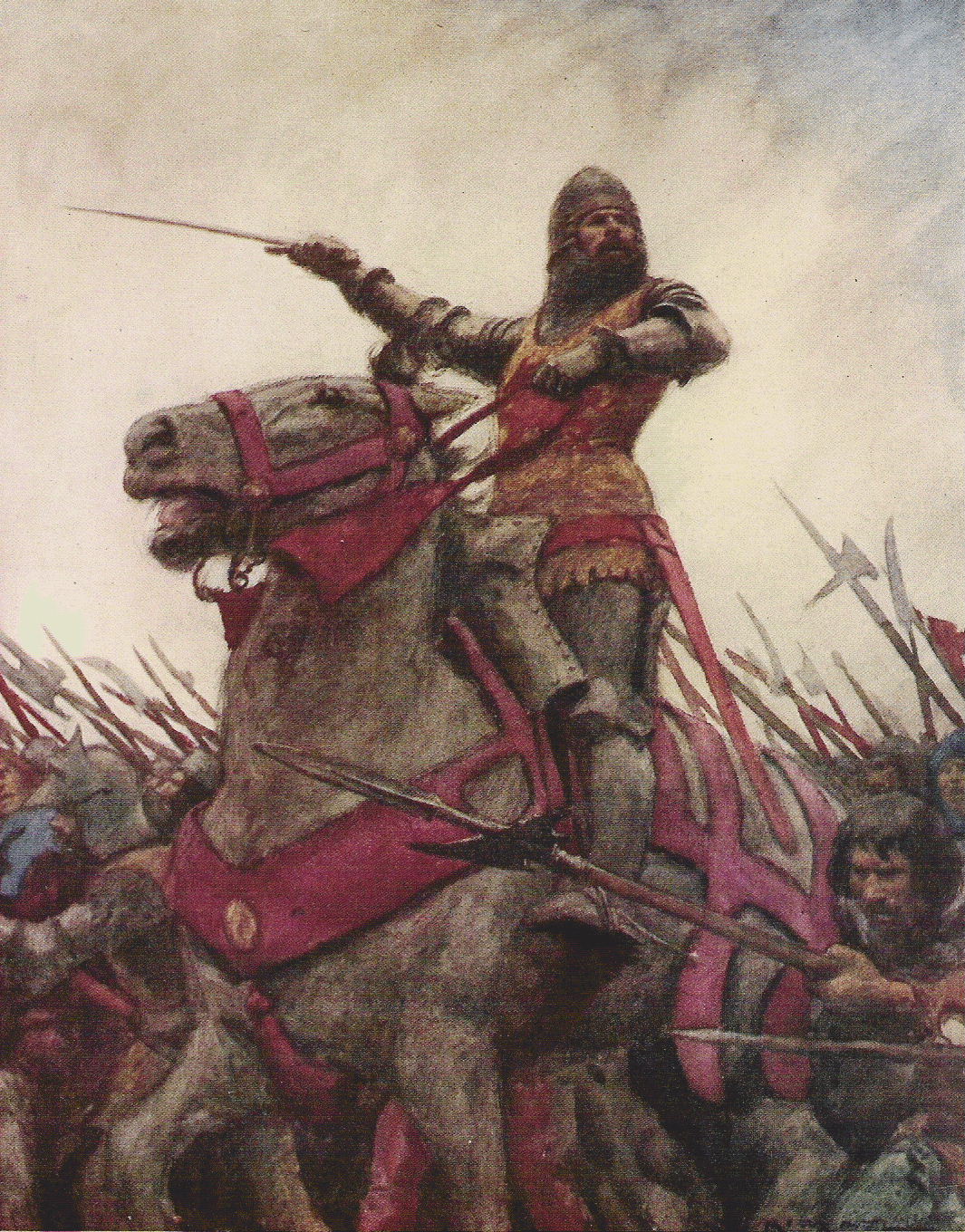|
Eisteddfod
In Welsh culture, an ''eisteddfod'' is an institution and festival with several ranked competitions, including in poetry and music. The term ''eisteddfod'', which is formed from the Welsh morphemes: , meaning 'sit', and , meaning 'be', means, according to Hywel Teifi Edwards, "sitting-together." Edwards further defines the earliest form of the eisteddfod as a competitive meeting between bards and minstrels, in which the winner was chosen by a noble or royal patron.Hywel Teifi Edwards (2015), ''The Eisteddfod'', pages 5–6. The first documented instance of such a literary festival and competition took place under the patronage of Prince Rhys ap Gruffudd of the House of Dinefwr at Cardigan Castle in 1176. However, with the loss of Welsh independence at the hands of King Edward I, the closing of the bardic schools, and the Anglicization of the Welsh nobility, it fell into abeyance. The current format owes much to an 18th-century revival, first patronized and overseen by th ... [...More Info...] [...Related Items...] OR: [Wikipedia] [Google] [Baidu] |
National Eisteddfod Of Wales
The National Eisteddfod of Wales (Welsh: ') is the largest of several eisteddfodau that are held annually, mostly in Wales. Its eight days of competitions and performances are considered the largest music and poetry festival in Europe. Competitors typically number 6,000 or more, and overall attendance generally exceeds 150,000 visitors. The 2018 Eisteddfod was held in Cardiff Bay with a fence-free 'Maes'. In 2020, the event was held virtually under the name AmGen; events were held over a one-week period. History The National Museum of Wales says that "the history of the Eisteddfod may etraced back to a bardic competition held by the Lord Rhys in Cardigan Castle in 1176", and local Eisteddfodau have certainly been held for many years prior to the first national Eisteddfod. There have been multiple Eisteddfodau held on a national scale in Wales, such as the Gwyneddigion Eisteddfod of , the Provincial Eisteddfodau from 1819 to 1834, the Abergavenny Eisteddfodau of 1835 to 1851, ... [...More Info...] [...Related Items...] OR: [Wikipedia] [Google] [Baidu] |
1176 Cardigan Eisteddfod
The 1176 Cardigan eisteddfod, as it is commonly described, was a cultural tournament involving bards and musicians, held in the grounds of Cardigan Castle, Cardigan, West Wales, by the Lord Rhys ap Gruffydd. Though the term ' Eisteddfodd' was not commonly used until several centuries later, the 1176 gathering is commonly claimed to be the earliest recorded forerunner of the modern national eisteddfod event. Background Rhys ap Gruffydd became the ruler uniting the whole of Deheubarth, covering southwest Wales, in 1155. This had followed years of battles with the English King Henry II. Rhys was made Lord of Ystrad Tywi or, commonly, the Lord Rhys. There followed a period of relative peace and security. In the early 1170s Henry II sought friendship with Rhys and confirmed his leadership of Deheubarth. In 1171 Rhys rebuilt Cardigan Castle in stone, as a political and military statement, making it his chief residence. Welsh princes commonly patronised professional bards at the ... [...More Info...] [...Related Items...] OR: [Wikipedia] [Google] [Baidu] |
Cardigan Castle
Cardigan Castle ( cy, Castell Aberteifi) is a castle overlooking the River Teifi in Cardigan, Ceredigion, Wales. It is a Grade I listed building. The castle dates from the late 11th-century, though was rebuilt in 1244. Castle Green House was built inside the castle walls in the early 1800s. After falling into disrepair the castle was restored in the early 2000s and opened to the public in 2015. It is owned by Ceredigion County Council and now includes a heritage centre and open-air concert facilities. History The first motte-and-bailey castle (ca.1093) was built a mile away from the present site, probably about the time of the founding of the town by Roger de Montgomery, a Norman baron. The forerunner of the present castle was built by Gilbert Fitz Richard Lord of Clare after the former was destroyed. The castle was handed down to Gilbert's son, Gilbert de Clare, 1st Earl of Pembroke in 1136. The same year, Owain Gwynedd led the defeat of the Norman rulers in the town of Ca ... [...More Info...] [...Related Items...] OR: [Wikipedia] [Google] [Baidu] |
Archdruid
Archdruid () is the title used by the presiding official of the Gorsedd. The Archdruid presides over the most important ceremonies at the National Eisteddfod of Wales including the Crowning of the Bard, the award of the and the Chairing of the Bard. Although Iolo Morganwg was the first to preside over the Gorsedd when the National Eisteddfod came into being, his successor David Griffith, under the bardic name "Clwydfardd", was the first to be known by the official title "Archdruid". The Archdruid's regalia, devised by the early revivers of the eisteddfod during the early 19th century, includes a crown, a sceptre, and a breastplate in the form of a torc. These were redesigned in 1896 by Hubert von Herkomer, to be made of gold and decorated with oak leaves, symbolising the sacred groves associated with druidry. (The Welsh word for "oak" is "derw" from which "druid" is thought to be derived.) A special ring of office was also introduced. The current sceptre has been in use sinc ... [...More Info...] [...Related Items...] OR: [Wikipedia] [Google] [Baidu] |
Gorsedd Cymru
Gorsedd Cymru (), or simply the Gorsedd or the Orsedd ( cy, yr Orsedd), is a society of Welsh-language poets, writers, musicians and others who have contributed to the Welsh language and to public life in Wales. Its aim is to honour such individuals and help develop and promote their fields in addition to maintaining relationships with other Celtic nations and Y Wladfa. The Gorsedd is most prominent at the National Eisteddfod of Wales where it is responsible for the main ceremonies held. Name The word ''gorsedd'' (plural ''gorseddau'') means "throne" in Welsh. Equivalent terms exist in Cornish (''gorsedh'') and Breton (''goursez''). When the term is used without qualification, it generally refers to the national ''Gorsedd'' of Wales, namely ''Gorsedd Cymru''. Note that when referred to as simply "the Gorsedd" in Welsh, the initial g is dropped due to soft mutation, resulting in ''yr Orsedd''. Other ''gorseddau'' exist outside of Wales, such as the Cornish Gorsedh Kernow and ... [...More Info...] [...Related Items...] OR: [Wikipedia] [Google] [Baidu] |
Bard
In Celtic cultures, a bard is a professional story teller, verse-maker, music composer, oral historian and genealogist, employed by a patron (such as a monarch or chieftain) to commemorate one or more of the patron's ancestors and to praise the patron's own activities. With the decline of a living bardic tradition in the modern period, the term has loosened to mean a generic minstrel or author (especially a famous one). For example, William Shakespeare and Rabindranath Tagore are respectively known as "the Bard of Avon" (often simply "the Bard") and "the Bard of Bengal".Oxford Dictionary of English, s.v. ''bard'', n.1. In 16th-century Scotland, it turned into a derogatory term for an itinerant musician; nonetheless it was later romanticised by Sir Walter Scott (1771–1832). Etymology The English term ''bard'' is a loan word from the Celtic languages: Gaulish: ''bardo-'' ('bard, poet'), mga, bard and ('bard, poet'), wlm, bardd ('singer, poet'), Middle Breton: ' ... [...More Info...] [...Related Items...] OR: [Wikipedia] [Google] [Baidu] |
Welsh Culture
The culture of Wales (Welsh language, Welsh: ''Diwylliant Cymru'') is distinct, with its own Welsh language, language, customs, Politics of Wales, politics, festivals, Music of Wales, music and Welsh_art, Art. Wales is primarily represented by the symbol of the red Welsh Dragon, but other national emblems include the leek and the daffodil. Although sharing many customs with the other nations of the United Kingdom, Wales has its own distinct traditions and culture, and from the late 19th century onwards, Wales acquired its popular image as the "land of song", in part due to the eisteddfod tradition. Development of Welsh culture Historical influences Wales has been identified as having been inhabited by humans for some 230,000 years, as evidenced by the discovery of a Neanderthal at the Bontnewydd Palaeolithic site in north Wales. After the Wales in the Roman era, Roman era of occupation, a number of small kingdoms arose in what is now Wales. These early kingdoms were also influ ... [...More Info...] [...Related Items...] OR: [Wikipedia] [Google] [Baidu] |
Bardic Name
A bardic name (, ) is a pseudonym used in Wales, Cornwall, or Brittany by poets and other artists, especially those involved in the eisteddfod movement. The Welsh term bardd ("poet") originally referred to the Welsh poets of the Middle Ages, who might be itinerant or attached to a noble household. Some of these medieval poets were known by a pseudonym, for example Cynddelw Brydydd Mawr ("Cynddelw the Master Poet"), fl. 1155–1200 and Iolo Goch ("Iolo the Red"), c. 1320 – c. 1398. The practice seems to have very ancient antecedents, as in the names of the presumably 6th century poets Talhaearn Tad Awen, Blwchfardd and Culfardd, mentioned by the Welsh historian Nennius alongside Taliesin and Aneirin, the last referred to as ''Aneurin Gwenithwawd'' ("Aneurin of the Corn Poetry"). The revival of bardic names became something of a conceit following the reinvention of medieval tradition by Iolo Morganwg in the 18th century. The usage has also extended to Breton and Cornish poet ... [...More Info...] [...Related Items...] OR: [Wikipedia] [Google] [Baidu] |
Gwyneddigion Society
The Gwyneddigion Society ( cy, Cymdeithas y Gwyneddigion) was a London-based Welsh literary and cultural society. The original society was founded in 1770 and wound up in 1843. It was briefly revived in 1978. Its proceedings were conducted through the medium of Welsh. History The Gwyneddigion Society was founded in December 1770 by a group of expatriate Welshmen resident in London, its first formal meeting taking place on 4 February 1771. Foremost of the founders was Owen Jones (known as Owain Myfyr), who became the society's first president. Originally from Llanfihangel Glyn Myfyr, Jones had moved to London as a young man and had earned his fortune as a furrier. Other notable early members included Iolo Morganwg (Edward Williams), William Owen Pughe, Jac Glan-y-gors (John Jones), Siôn Ceiriog (John Edwards), Edward Jones ("Bardd y Brenin"), and Twm o'r Nant (Thomas Edwards). Although the society's name (meaning "Gwynedd scholars") suggests a particular link with the region of ... [...More Info...] [...Related Items...] OR: [Wikipedia] [Google] [Baidu] |
Rhys Ap Gruffudd
Rhys ap Gruffydd, commonly known as The Lord Rhys, in Welsh ''Yr Arglwydd Rhys'' (c. 1132 – 28 April 1197) was the ruler of the Welsh kingdom of Deheubarth in south Wales from 1155 to 1197 and native Prince of Wales. It was believed that he usually used the title "Proprietary Prince of Deheubarth" or "Prince of South Wales"; however, two documents have been discovered in which he uses the title "Prince of Wales" or "Prince of the Welsh".In a charter concerning a grant to Chertsey Abbey he used ''princeps Wall e' while in another charter dated 1184 concerning Strata Florida Abbey he used ''Walliar mprinceps''. See Pryce (2005) pp. 96–97, 168–169, 171–174. Rhys was one of the most successful and powerful Welsh leaders of the Middle Ages, and after the death of the king of Gwynedd, Owain Gwynedd in 1170, he was the dominant power in Wales. Rhys's grandfather, Rhys ap Tewdwr, was king of Deheubarth, and was killed at Brecon in 1093 by Bernard de Neufmarché. Following his ... [...More Info...] [...Related Items...] OR: [Wikipedia] [Google] [Baidu] |
Nonconformity In Wales
Nonconformity was a major religious movement in Wales from the 18th to the 20th centuries. The Welsh Methodist revival of the 18th century was one of the most significant religious and social movements in the modern history of Wales. The revival began within the Church of England in Wales, partly as a reaction to the neglect generally felt in Wales at the hands of absentee bishops and clergy. For two generations from the 1730s onwards the main Methodist leaders such as Howell Harris, Daniel Rowland and William Williams Pantycelyn remained within the Church of England, but the Welsh revival differed from the Methodist revival in England in that its theology was Calvinist rather than Arminian. Methodists in Wales gradually built up their own networks, structures, and meeting houses (or chapels), which led, at the instigation of Thomas Charles, to the secession of 1811 and the formal establishment of the Calvinistic Methodist Presbyterian Church of Wales in 1823. The 18th-century revi ... [...More Info...] [...Related Items...] OR: [Wikipedia] [Google] [Baidu] |
Albert Evans-Jones
Sir (Albert) Cynan Evans-Jones CBE (14 April 1895 – 26 January 1970), more commonly known within Wales by his bardic name of Cynan, was a Welsh war poet and dramatist. Early life Cynan was born in Pwllheli as Albert Evan Jones, the son of Richard Albert Jones and Hannah Jane (née Evans) his father was the proprietor of the Central Restaurant in Penlan Street, Pwllheli. He was educated at Pwllheli Grammar School and the University College of North Wales at Bangor, where he graduated in 1916. First World War On graduation Cynan joined the Welsh Student Company of the RAMC, serving in Salonika and France, initially as an ambulance man and then as the company's military chaplain. His wartime experience had a profound effect on his poetic works, to such an extent that Alan Llwyd claims that Cynan, not Hedd Wyn, is the premier Welsh war poet of the First World War. Hedd Wyn's poems relating to the war were written before he had enlisted and he was killed before he could re ... [...More Info...] [...Related Items...] OR: [Wikipedia] [Google] [Baidu] |



.jpg)


